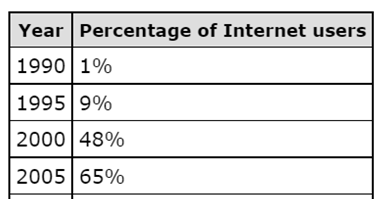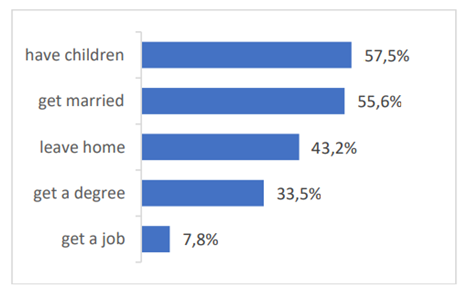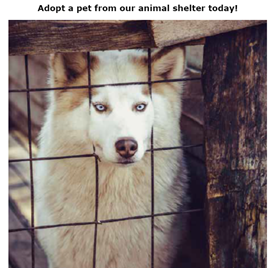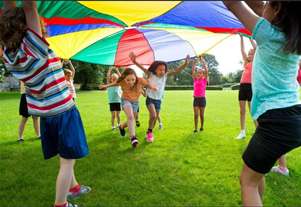Вариант 12
Раздел 1. Аудирование
Вы услышите 6 высказываний. Установите соответствие между высказываниями каждого говорящего A—F и утверждениями, данными в списке 1—7. Используйте каждую букву, обозначающую утверждение, только один раз. В задании есть одно лишнее утверждение. Вы услышите запись дважды. Занесите свои ответы в поле справа.
Нажмите , чтобы прослушать запись
1. It is useful to do workouts without the gym.
2. Making this change gives new skills and emotions.
3. This sport is great for your body.
4. Walking or sightseeing with your family and friends is an ideal workout.
5. Travelling in winter can be dangerous.
6. Enjoying winter weather has a lot of benefits.
7. Holiday shopping is another great opportunity to become fit.
Вы услышите диалог. Определите, какие из приведенных утверждений A—G соответствуют содержанию текста (1 — True), какие не соответствуют (2 — False) и о чем в тексте не сказано, то есть на основании текста нельзя дать ни положительного, ни отрицательного ответа (3 — Not stated). Вы услышите запись дважды.
Нажмите , чтобы прослушать запись
A. Laura is upset because she has some financial problems.
B. Laura likes all the clothes she’s bought on sales.
C. Laura spent all her money on the Christmas sales.
D. James has never bought anything on sales.
E. According to James, shopping may attract boys as much as girls.
F. James can’t give Laura any advice.
G. Laura and James will go to the coffee shop on High Street.
Which of the following does Diane NOT mention about musical training?
1. It helps children with special needs.
2. It makes the human brain develop quickly.
3. It enhances communication skills.
What does musical training do to help education
1. It helps to develop lots of various senses.
2. It provides students with extra information.
3. It teaches children how to speak.
What did Diane learn from the experiment about the brain stem activity?
1. Music may affect it.
2. It can't be changed.
3. It is not important for learning.
What people were involved in the experiment?
1. People with learning disabilities.
2. People who could play the cello.
3. People regardless of their musical abilities.
People with musical training experience did better in ...
1. sciences.
2. humanities.
3. both sciences and humanities.
With the help of musical training children with learning disabilities begin to ...
1. produce longer sentences.
2. use body language.
3. understand miming better.
Where is Diane’s discovery being used?
1. In all comprehensive schools.
2. In some experimental schools.
3. In music schools all over the country.
Раздел 2. Чтение
1. The invention of a highlighter
2. For drawing angles
3. Three-ring binder
4. Shaped like breadbaskets
5. An ancient writing tool
6. Important properties
7. Regional differences
8. For carrying textbooks
A. An ancient Roman writing instrument, the stylus, gave rise to the modem pencil. Some early styluses were made of lead. When graphite was documented in Borrowdale, England, in 1564, the mineral replaced the heavy metal. Graphite left a darker mark on papyrus, but it was so soft that it crumbled easily. To protect the graphite, a holder had to be fashioned for it. The first holders were nothing more than string wound around graphite sticks. Later, hollow wooden sticks replaced the string.
B. In the United States and Canada, it’s an eraser. But in the United Kingdom, India, Ireland, South Africa, Australia, and New Zealand, the object used to eradicate pencil or ink marks is known as a rubber. Before 1770, when erasers first appeared, many people used small rubber or wax slabs to rub out their penciled mistakes. To eradicate errors in ink, they employed sandstone or pumice. Japanese writers used soft bread to erase pencil marks.
C. Starting in 1888, when American tanner John Loud patented his version of a ballpoint pen to mark hides, over 350 other inventors began patenting additional designs for a ballpoint pen, but none of them saw production. The viscosity, or thickness, of the ink had to be just right: too thin, and it leaked; too thick, and it clogged. The ink’s viscosity was often at the mercy of the temperature. In 1935, Ladislas and Greg Biro set out to invent a better pen and made their Biro pen.
D. Before the 1960s, when Japanese inventor Yukio Horie invented a felt-tip pen that used water-based ink, students kept track of important textbook information by making marginal notes and underlining key words and passages. In 1963, Carter’s Ink produced the Hi-Liter, a marker similar to Horie’s pen. Both instruments rely on capillary action to draw ink into their tips. Fluorescent colours were introduced in 1978. Since then, polyethylene beads molded into porous heads have replaced felt tips, and there are retractable and scented models.
E. The protractor has been measuring angles for 500 years. Mapma- ker Thomas Blundeville first described the instrument in his 1589 monograph. By the early 17th century, protractors were commonly used by maritime navigators. By the 20th century, their use among students in elementary and intermediate schools became prevalent. The variety of uses for protractors dictates their range of shapes. Protractors made of brass, steel, ivory, and plastic appear in the forms of circles, rectangles, squares, semicircles and quarter-circles.
F. German inventor and office supplier Friedrich Soennecken invented the ring binder in 1886. Later, two holes in the side of the binder were added, 80 millimeters apart from one another, setting the standard distance between these openings. When loose-leaf paper appeared in 1854, Henry T. Sisson invented the two- and three- ring binders, but they weren’t mass-produced until 1899, when the Chicago Binder and File Company began to sell the product. The three-ring version remains the most favoured by today’s students.
G. Backpacks haven’t been around for very long. Before their advent, students strapped stacks of books together and carried them at the end of leather or cloth thongs. Alternatively, they carried them by hand, boys slung under their arms, girls cradling them as though they were babes in arms. In 1938, outdoor clothing and gear retailer Gerry Outdoors invented the first zippered backpack, but students weren’t interested in them at the time. They sold mostly to campers, hikers, and skiers. Students stuck with straps or used small briefcases called satchels.
Прочитайте текст и заполните пропуски A-F частями предложений, обозначенными цифрами 1-7. Одна из частей в списке лишняя.
1. naming the peak bloom date
2. the period when 20 percent of the blossoms are open
3. that are designed to please all ages and interests
4. friendship between the U.S. and Japan
5. that is provided by DC’s talented and creative guides
6. which is a celebration of contemporary art and music
7. which are popular for eating outdoors
When Washington DC's signature cherry trees bloom, it is a sure sign that spring has arrived. The National Cherry Blossom Festival runs over three weekends annually, marking each anniversary of the gift of the trees and celebrating the A _______ .
The Festival is always packed with special events В _______. Families flock to the National Building Museum for Family Day and the Open Ceremony and to the southwest waterfront for impressive fireworks. DC's hip and artistic crowd even has a place on the Festival calendar with Cherry Blast, C _______ . Visitors can catch free cultural showcases every day by nearly 100 performance groups at the Sylvan Theatre on the Washington Monument grounds.
It is also a prime time to check out a specialty tour D _______. You will learn about the history of the trees and brush up on your photography skills as you capture the Tidal Basin at its finest.
Although the Festival is planned to coincide with the blooming of the trees, the actual bloom dates depend on weather conditions and vary from year to year. The National Park Service monitors the blossoms throughout the year and releases its prediction, E _______, in early March. The peak bloom date is defined as the day on which 70 percent of the blossoms of the Yoshino cherry trees that surround the Tidal Basin are open. The Blooming Period is defined as F _______ until the petals fall and leaves appear. The blooming period can last as long as two weeks.
Прочитайте текст и выполните задания 12—18, обводя цифру 1, 2, 3 или 4, соответствующую номеру выбранного вами варианта ответа.
For almost every person there will be a time in their life when they decide that they want to volunteer. There could be numerous reasons why you want to start doing volunteering work - from retirement to plain old fashioned good will. Different people may find different arguments in favour of doing this kind of work or service, if I can put it this way. But how do you get into the world of volunteering?
First of all, you need to make the time to volunteer and before you can start approaching organizations and enquiring about volunteering opportunities, you need to first figure out how much of your time you can dedicate to volunteering. If you are working, then ask your employer if you can have consistent weekdays off, so you can then have regular time to volunteer each week. When you can promise a set amount of time to an organization, then they are much more likely to offer you a volunteering position. So think twice whether you can allocate enough time to this work before you start, otherwise it can be very disappointing for both sides. Next, it is time to think about why you want to volunteer. This may sound obvious, but have a good long think about the reasons why you are volunteering. Is it because you’re passionate about helping others? Is it because you want to meet and spend time with new people? Or is it because you want to gain further experience and qualifications? Knowing your motives can help you decide which organizations and roles are best suited to your wants. Mind there are more opportunities for volunteering than you might know about or imagine.
The next step is to find an organization to volunteer with. You can volunteer at a local homeless shelter or at a charity shop. Maybe you like working with children, in which case the local youth center would be an ideal place to start with. Perhaps animals are more your thing, so you could ask a local animal shelter if they need a hand. As it was mentioned before, there are plenty of places you could volunteer to work with. Simply do your research, find the place that suits you and get in touch. Many organizations don’t advertise that they’re looking for volunteers, so it may be up to you to make the first move and contact them.
So, now you know how much time you can dedicate to volunteering, as well as why you want to volunteer and where you want to do it. The next step is to secure your position working within that organization by writing a CV. This may not be a paid position, but that doesn't mean you should be less ambitious than you normally would be when approaching a potential employer. In your CV you should outline any experience you've had that is relevant to your voluntary position, explain why you want to volunteer and how you would benefit the company. State clearly how much free time you have to dedicate and how long you would be comfortable to work for the organization in terms of days, weeks, and months.
Laying out these clear ground rules will prevent you from being taken advantage of and overworked, and will also help your potential employer understand your needs. Apart from being rewarding in many ways (though not in the financial one), volunteering is often envisaged as an important part of social and personal maturing. No wonder there are so many volunteers among the young people in many countries of the world.
According to the author, people mostly become interested in volunteering because it is ...
1. an interesting activity for pensioners.
2. a popular trend in the modem world.
3. natural for a human being.
4. a chance to experience new things.
According to the author, to start volunteering one first has to
1. get rid of a full-time job.
2. know exactly how much time one has available.
3. acquire the approval of the boss.
4. get in touch with a responsible organization.
Which of the following is NOT mentioned as the reason to volunteer?
1. The wish to be useful.
2. The desire to socialize.
3. The need to upgrade one’s skills.
4. The need to get organized.
The choice of the organization for volunteering depends on ...
1. a person’s personal preferences.
2. the ability to find such places.
3. the needs of the organization.
4. the features of the person’s character.
In order to be able to find an interested organization, a person should ...
1. like homeless animals.
2. look for a proper advertisement.
3. be active and take initiative.
4. look for it in the same community.
According to the author, а СV demonstrates your ...
1. professional attitude.
2. academic background.
3. plans for your future career.
4. hobbies and interests.
It can be inferred that the author gives these instructions so that people can ...
1. avoid risks doing this work.
2. find the best organization.
3. take the best from their volunteering experience.
4. realize their potential talents.
Раздел 3. Грамматика и лексика
Прочитайте приведенные ниже тексты. Преобразуйте, если необходимо, слова, напечатанные жирными буквами в конце строк, обозначенных номерами 19—24, так, чтобы они грамматически соответствовали содержанию текстов. Перенесите полученный ответ в соответствующее поле справа. Каждый пропуск соответствует отдельному заданию из группы 19 — 24. Ответ пишите без пробелов и иных знаков.
CALLPancake Day is celebrated in many countries of the world. Unlike Russia, this celebration in Europe and America lasts only one day. It takes place on Tuesday, ______ Pancake Tuesday.
HOLDIn England, pancake races ______ all over the country.
TAKE Women _______ part in them must wear an apron and a hat or scarf. Each of them has a frying pan containing a hot pancake. She must toss it three times during the race.
NOT BEAt the end of the race, the pancake should look just as appetizing, round and beautiful as at the start of the race. It ______ easy!
DRIVEIt was a cold winter night. I ______ home from the office.
NOT SEEI _______ how slippery it was. When I tried to stop at the crossroads, I couldn’t. My car crashed into the bumper of a police car.
Прочитайте приведенный ниже текст. Преобразуйте слова, напечатанные жирными буквам в конце строк 25—29, так, чтобы они грамматически и лексически соответствовали содержанию текста. Заполните соответствующее поле справа полученными словами. Каждое поле соответствует отдельному заданию из группы 25—29.
PRACTICEDifferent events in history influence how people dressed during those times. For example, during World War II people used the minimum amount of clothing materials to make simple outfits. They were _______ enough for wartime duties.
DESIGNThe profession of _______ was not popular at the time.
SUCCESSSometimes social and political changes affect how people dress. For instance, in the 1980s the idea was that you could become, as _______ as you believed yourself to be. Therefore, many people “dressed for success”. Many men and women wore suits that would help them move up the career ladder.
CONSERVEPresent-day fashion for men is still _______ , Usually a dark-colored suit is worn with a white shirt and a tie.
FASHION Some fashions are classic, meaning that they never go out of style. However, other clothing items are _______ for a short season only.
Прочитайте текст с пропусками, обозначенными номерами 30 — 36. Эти номера соответствуют заданиям 30 — 36, в которых представлены возможные варианты ответов. Обведите номер выбранного вами варианта ответа.
When I was ten, I spent the best months of my life in Norway at the mountain farm where my mother was born. What 32 ______ most vivid in my mind are the times I shared with my Grandfather Jorden.
The first thing I 33 ______ about Grandfather was his big hands and broad shoulders. The second thing was how he could work. All summer I watched him. He mowed grass, gathered the hay in huge bundles, and carried them on his back to the bam. He caught and salted fish, grew and stored potatoes. He stopped only long enough to eat and to sleep a few winks. 34 ______ people could work so hard.
And yet he 35 ______ to find time for just the two of us. One day he gave me a knife. He took his own knife and cut a thin branch from a 36 ______ tree. He showed me how to make a flute. Even today, 60 years later, whenever I hear the pure notes of a flute, I think of how he made music from nothing but a branch of a tree.
As an American, I always thought people simply bought whatever they needed. I don’t know 37 ______ Grandfather knew this, but it seems he wanted to teach me something. And the flute will always 38 ______ me of my Grandfather and his life lessons.
noticed
remarked
looked
recognized
noticed
remarked
looked
recognized
Many
Little
Few
Much
fulfilled
achieved
succeeded
managed
close
nearby
next
near
therefore
however
whether
although
remind
recall
remember
recollect
Раздел 4. Письмо
При выполнении заданий 37 и 38 особое внимание обратите на то, что Ваши ответы будут оцениваться только по записям, сделанным в БЛАНКЕ ОТВЕТОВ. Никакие записи черновика не будут учитываться экспертом. Обратите внимание также на необходимость соблюдения указанного объёма текста. Тексты недостаточного объёма, а также часть текста, превышающая требуемый объём, не оцениваются.
You have received an email message from your English-speaking pen-friend Sophie:
From: Friend@mail.uk
To: Russian_friend@neznaika.info
Subject: Welcome
… Last week our science teacher took my class on a school trip to the Natural History Museum in Washington D.C. It was fantastic! Where do your teachers take you on school trips? How often do you go? What school trip was the most memorable and why? By the way, my parrot has learned to say “Good morning!” every time the alarm clock goes off! It took me quite a while to teach it!
Write an email to Sophie.
In your message
- answer her questions
- ask 3 questions about Sophie’s parrot.
Write 100—140 words.
Remember the rules of email writing.
38.1. Imagine that you are doing a project on the percentage of Internet users in Zetland. You have found some data on the subject (see the table below).Comment on the data in the table and give your personal opinion on the subject of the project.

Write 200−250 words. Use the following plan:
— make an opening statement on the subject of the project work;
— select and report 2−3 main features;
— make 1−2 comparisons where relevant;
— outline a problem that can arise with the Internet access and suggest the way of solving it;
— draw a conclusion giving your personal opinion on the importance of the Internet
38.2. Imagine that you are doing a project on what life events are important for people in Zetland. You have found some data on the subject (see the diagram below). Comment on the data in the diagram and give your personal opinion on the subject of the project

Use the following plan:
– make an opening statement on the subject of the project work;
– select and report 2–3 main features;
– make 1–2 comparisons where relevant;
– outline a problem that can arise with life events and suggest the way of solving it;
– draw a conclusion giving your personal opinion on the importance of life events in human life.
Раздел 5. Говорение
Imagine that you are preparing a project with your friend. You have found some interesting material for the presentation and you want to read this text to your friend. You have 1.5 minutes to read the text silently, then be ready to read it out aloud. You will not have more than 1.5 minutes to read it.
Food is material that comes from animals or plants. It is eaten by living things to provide energy and nutrition. Food contains the nutrition that people need to be healthy. Food for humans is mostly made through farming or gardening, and includes animal and vegetable sources. Some people refuse to eat food of animal origin, like meat, eggs, and products with milk in them. A person who does not eat meat is called a vegetarian.
Most people do not grow their own food, so they have to buy food that was grown by someone else. People buy most of their food in stores, shops, or markets. But some people still grow most or all of their own food.
People may buy food and take it home to cook it, or buy food that is ready to eat from a street vendor, or in a restaurant.
Study the advertisement.

You are considering adopting a dog from an animal shelter and now you’d like to get more information. In 1.5 minutes you are to ask four direct questions to find out about the following:
- adoption process
- if dogs are already vaccinated
- possibility of taking the dog home the same day
- breeds available now
You have 20 seconds to ask each questions.
1. How long is adoption process of the dog?
2. Have your dogs already vaccinated?
3. Is it possible to take the dog home the same day?
4. Are breeds available now?
You are going to give an interview. You have to answer five questions. Give full answers to the questions (2−3 sentences). Remember that you have 40 seconds to answer each question.
Interviewer: Hello everybody! It’s Teenagers Round the World Channel. Our guest today is a teenager from Russia and we are going to discuss science. We’d like to know our guest’s point of view on this issue. Please answer five questions. So, let’s get started.
Interviewer: What science is your favourite? Why?
Student: _________________________
Interviewer: How does the scientific progress benefit the world?
Student: _________________________
Interviewer: Do schools need to focus more on science?
Student: _________________________
Interviewer: Would you like to work as a scientist? Why?
Student: _________________________
Interviewer: If you could focus on inventing a single thing, what would it be?
Student: _________________________
Interviewer: Thank you very much for your interview.
1. My favourite science is psychology. I am interested in it, because I like communicate with people and this science allows to help people's mental health.
2. Science helps people to live longer, calmer, more comfortable, happier. Science reveals things unknown to the world and explains many phenomena.
3. Yes, I think they do. Schools need to focus more on science, because it's important for all global community. People should learn science.
4. No, I wouldn't like to work as a scientist, because I want to be a teacher at school. It's my dream and I really can explain difficult materials for children.
5. If I could I would create an air and water purification system. This is the most important resourse for people. And clean water and air would save the people's lives.
Imagine that you are doing a project "Group activities" together with your friend. You have found some illustrations and want to share the news. Leave a voice message to your friend. In 2.5 minutes be ready to tell the friend about the photos:
- give a brief description of the photos (2 features connected with the subject of the project in each photo minimum)
- say in what way the pictures are different (2 features connected with the subject of the project minimum)
- mention the advantages and disadvantages (1–2) of the two ways of spending time as a group;
- express your opinion on the subject of the project – what kind of activity would you prefer?
[b]You will speak for not more than 3 minutes (2–3 sentences for every item of the plan, 12–15 sentences total). You have to talk continuously. /b]


| № | Ваш ответ | Ответ и решение | Первичный балл |
|---|---|---|---|
|
Здесь появится результат первой части. Нажмите на кнопку «Завершить работу», чтобы увидеть правильные ответы и посмотреть решения. |
|||